#reed roof
Text
#roof thatcher ireland#thatching Ireland#thatched roofer#thatch roof#roof thatching#roof thatch#roof thatcher#thaching ireland#english thatch roof#roof thatchers near me#thatched roofing ireland#thatch roofs ireland#straw roofing in ireland#thatch roofing near me#thatching roofs in Ireland#reed roof
1 note
·
View note
Text

Can we please not make this more painful?
#fantastic four#Mr fantastic#reed richards#the human torch#johnny storm#working#expanding vocabulary#roofing#angry#the world’s greatest comic magazine#ryan north#iban coello#marvel comics#comics#2020s comics
19 notes
·
View notes
Text






Nick looks back at Christina. Nick asks, What is it? Christina tells Nick, Uh, my ankle. I... I think I twisted it pretty badly. Nick assures Christina, You did everything you could to help him. Christina answers, Yeah. Nick asks, You sure you're okay? Christina says, I'm okay. Christina takes a deep breathe and says, I'm okay. Nick and Christina take a look over to where a dead Matthew is.
#Forever Knight#110 Dead Air#Matthew's apartment#Roof#flying#Nick Knight#Geraint Wyn Davies#Dr. Christina Noble#Diane Cary#Ankle#Dead#Matthew Reed#David Hewlett#Former Patient#Vampires#blood#Toronto#Canada#Police#Nicholas Knight#Nicholas De Brabant#Homicide#Murder#Call in Radio Show
3 notes
·
View notes
Text
Language of Flowers: Reed
In the language of flowers, the flower for today, October 17, is the Reed, which signifies complaisance.
Image above from Wikipedia.
The Celtic meaning of the Reed deals with themes of connectivity, networking, and provision. Although the Reed (Phragmites australis) isn’t a tree, the Druids viewed any large plant with a woody stalk to be a tree, and the Reed was considered very important. All…

View On WordPress
#birthday#Celt#Celtic#complaisance#Druids#herbalism#Language of flowers#october#Phragmites australis#Reed#thatched roofs
0 notes
Text
trans masc bill sikes send tweet
#This would actually be#Bad#but implications aside I want his gender#I also want his [redacted]#but obviously he loses me with how he treats Nancy in the second half of the show#which is kind of a big point of the story#Still even when I was little I’d watch the bit where he goes up on the roof with the rope over and over cuz I was like damn 👀#You’re very bad but you’re badass 👀#Teach me pls???#Trans masc bill sikes who’s bastard to the world but sweetheart to his girl#Completely defeats important plot point in the story but you know what?#Nancy is an angel and deserves better and she really deserves like. One version where she gets to live#Don’t mind me I’m just back on my Oliver Reed bullshit again#Not that I really stopped#Oliver!#Oliver Twist
1 note
·
View note
Text
funny how most of my spins and fandoms have music as an important part of the lore
#gvh nsr enstars d4dj you get the deal#also on the gvh themed i had a dream yesterday where i got isekaed into the world of this game and just hang out with reed and fang#we smoked on the roof played music and drank beer#well. Not exactly beer. more of a beer soda ? idk how to say it in english. but the point still stands
0 notes
Text
Dick licking delights from magical girl Jenny
First time anal orgasm
Husband lets companion creampie me first time The Babysitters Club
Real ass, ducking little cousin
The horny nephew rides his uncle
Bangladeshi model live video
Busty milf gets her wet pussy licked and then gives a footjob
Asian hottie masturbating
Julia from snapchat fuck herself with dildo
Gf body show nude
#repass#realize#brocht#CMIP#uptightness#oui#sylvari#chondrosamine#cangy#neurospicy#phytosis#galact-#reed-roofed#gun-equipped#antilogy#worrel#successionally#self-confession#Dewees#nonbelligerent
0 notes
Text
Fantasy Guide to Interiors



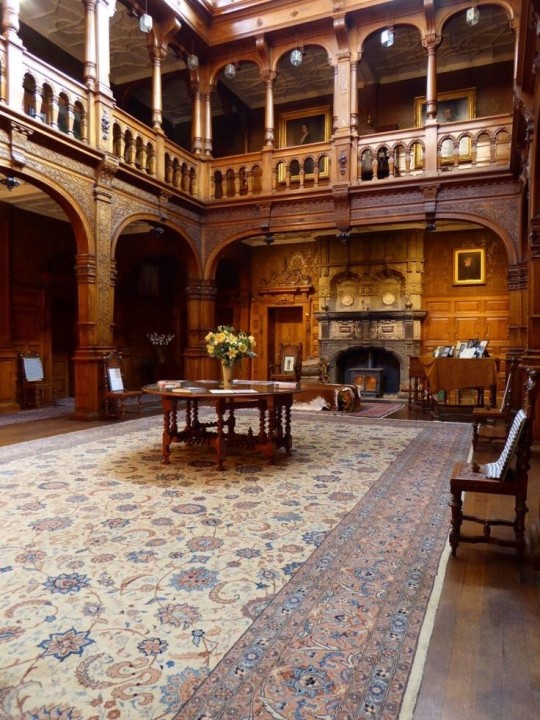
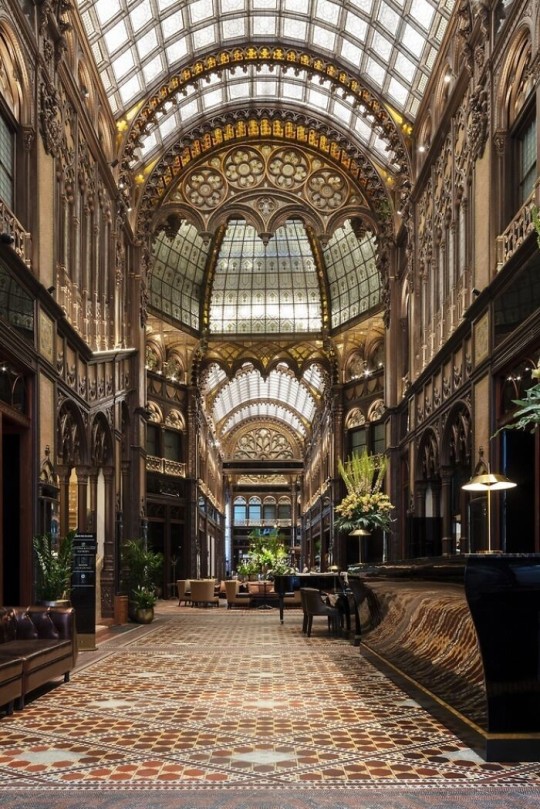
As a followup to the very popular post on architecture, I decided to add onto it by exploring the interior of each movement and the different design techniques and tastes of each era. This post at be helpful for historical fiction, fantasy or just a long read when you're bored.
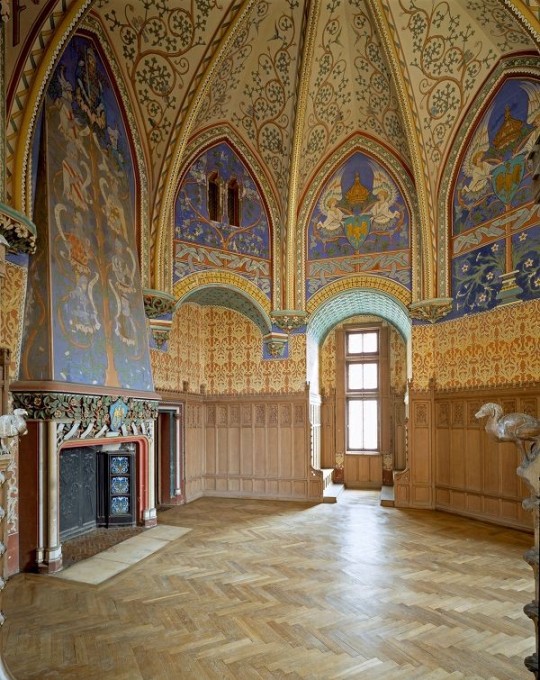


Interior Design Terms
Reeding and fluting: Fluting is a technique that consists a continuous pattern of concave grooves in a flat surface across a surface. Reeding is it's opposite.
Embossing: stamping, carving or moulding a symbol to make it stand out on a surface.
Paneling: Panels of carved wood or fabric a fixed to a wall in a continuous pattern.
Gilding: the use of gold to highlight features.
Glazed Tile: Ceramic or porcelain tiles coated with liquid coloured glass or enamel.
Column: A column is a pillar of stone or wood built to support a ceiling. We will see more of columns later on.
Bay Window: The Bay Window is a window projecting outward from a building.
Frescos: A design element of painting images upon wet plaster.
Mosaic: Mosaics are a design element that involves using pieces of coloured glass and fitted them together upon the floor or wall to form images.
Mouldings: ornate strips of carved wood along the top of a wall.
Wainscoting: paneling along the lower portion of a wall.
Chinoiserie: A European take on East Asian art. Usually seen in wallpaper.
Clerestory: A series of eye-level windows.
Sconces: A light fixture supported on a wall.
Niche: A sunken area within a wall.
Monochromatic: Focusing on a single colour within a scheme.
Ceiling rose: A moulding fashioned on the ceiling in the shape of a rose usually supporting a light fixture.
Baluster: the vertical bars of a railing.
Façade: front portion of a building
Lintel: Top of a door or window.
Portico: a covered structure over a door supported by columns
Eaves: the part of the roof overhanging from the building
Skirting: border around lower length of a wall
Ancient Greece
Houses were made of either sun-dried clay bricks or stone which were painted when they dried. Ground floors were decorated with coloured stones and tiles called Mosaics. Upper level floors were made from wood. Homes were furnished with tapestries and furniture, and in grand homes statues and grand altars would be found. Furniture was very skillfully crafted in Ancient Greece, much attention was paid to the carving and decoration of such things. Of course, Ancient Greece is ancient so I won't be going through all the movements but I will talk a little about columns.
Doric: Doric is the oldest of the orders and some argue it is the simplest. The columns of this style are set close together, without bases and carved with concave curves called flutes. The capitals (the top of the column) are plain often built with a curve at the base called an echinus and are topped by a square at the apex called an abacus. The entablature is marked by frieze of vertical channels/triglyphs. In between the channels would be detail of carved marble. The Parthenon in Athens is your best example of Doric architecture.
Ionic: The Ionic style was used for smaller buildings and the interiors. The columns had twin volutes, scroll-like designs on its capital. Between these scrolls, there was a carved curve known as an egg and in this style the entablature is much narrower and the frieze is thick with carvings. The example of Ionic Architecture is the Temple to Athena Nike at the Athens Acropolis.
Corinthian: The Corinthian style has some similarities with the Ionic order, the bases, entablature and columns almost the same but the capital is more ornate its base, column, and entablature, but its capital is far more ornate, commonly carved with depictions of acanthus leaves. The style was more slender than the others on this list, used less for bearing weight but more for decoration. Corinthian style can be found along the top levels of the Colosseum in Rome.
Tuscan: The Tuscan order shares much with the Doric order, but the columns are un-fluted and smooth. The entablature is far simpler, formed without triglyphs or guttae. The columns are capped with round capitals.
Composite: This style is mixed. It features the volutes of the Ionic order and the capitals of the Corinthian order. The volutes are larger in these columns and often more ornate. The column's capital is rather plain. for the capital, with no consistent differences to that above or below the capital.
Ancient Rome
Rome is well known for its outward architectural styles. However the Romans did know how to add that rizz to the interior. Ceilings were either vaulted or made from exploded beams that could be painted. The Romans were big into design. Moasics were a common interior sight, the use of little pieces of coloured glass or stone to create a larger image. Frescoes were used to add colour to the home, depicting mythical figures and beasts and also different textures such as stonework or brick. The Romans loved their furniture. Dining tables were low and the Romans ate on couches. Weaving was a popular pastime so there would be tapestries and wall hangings in the house. Rich households could even afford to import fine rugs from across the Empire. Glass was also a feature in Roman interior but windows were usually not paned as large panes were hard to make. Doors were usually treated with panels that were carved or in lain with bronze.
Ancient Egypt
Egypt was one of the first great civilisations, known for its immense and grand structures. Wealthy Egyptians had grand homes. The walls were painted or plastered usually with bright colours and hues. The Egyptians are cool because they mapped out their buildings in such a way to adhere to astrological movements meaning on special days if the calendar the temple or monuments were in the right place always. The columns of Egyptian where thicker, more bulbous and often had capitals shaped like bundles of papyrus reeds. Woven mats and tapestries were popular decor. Motifs from the river such as palms, papyrus and reeds were popular symbols used.
Ancient Africa
African Architecture is a very mixed bag and more structurally different and impressive than Hollywood would have you believe. Far beyond the common depictions of primitive buildings, the African nations were among the giants of their time in architecture, no style quite the same as the last but just as breathtaking.
Rwandan Architecture: The Rwandans commonly built of hardened clay with thatched roofs of dried grass or reeds. Mats of woven reeds carpeted the floors of royal abodes. These residences folded about a large public area known as a karubanda and were often so large that they became almost like a maze, connecting different chambers/huts of all kinds of uses be they residential or for other purposes.
Ashanti Architecture: The Ashanti style can be found in present day Ghana. The style incorporates walls of plaster formed of mud and designed with bright paint and buildings with a courtyard at the heart, not unlike another examples on this post. The Ashanti also formed their buildings of the favourite method of wattle and daub.
Nubian Architecture: Nubia, in modern day Ethiopia, was home to the Nubians who were one of the world's most impressive architects at the beginning of the architecture world and probably would be more talked about if it weren't for the Egyptians building monuments only up the road. The Nubians were famous for building the speos, tall tower-like spires carved of stone. The Nubians used a variety of materials and skills to build, for example wattle and daub and mudbrick. The Kingdom of Kush, the people who took over the Nubian Empire was a fan of Egyptian works even if they didn't like them very much. The Kushites began building pyramid-like structures such at the sight of Gebel Barkal
Japanese Interiors
Japenese interior design rests upon 7 principles. Kanso (簡素)- Simplicity, Fukinsei (不均整)- Asymmetry, Shizen (自然)- Natural, Shibumi (渋味) – Simple beauty, Yugen (幽玄)- subtle grace, Datsuzoku (脱俗) – freedom from habitual behaviour, Seijaku (静寂)- tranquillity.
Common features of Japanese Interior Design:
Shoji walls: these are the screens you think of when you think of the traditional Japanese homes. They are made of wooden frames, rice paper and used to partition
Tatami: Tatami mats are used within Japanese households to blanket the floors. They were made of rice straw and rush straw, laid down to cushion the floor.
Genkan: The Genkan was a sunken space between the front door and the rest of the house. This area is meant to separate the home from the outside and is where shoes are discarded before entering.
Japanese furniture: often lowest, close to the ground. These include tables and chairs but often tanked are replaced by zabuton, large cushions. Furniture is usually carved of wood in a minimalist design.
Nature: As both the Shinto and Buddhist beliefs are great influences upon architecture, there is a strong presence of nature with the architecture. Wood is used for this reason and natural light is prevalent with in the home. The orientation is meant to reflect the best view of the world.
Islamic World Interior
The Islamic world has one of the most beautiful and impressive interior design styles across the world. Colour and detail are absolute staples in the movement. Windows are usually not paned with glass but covered in ornate lattices known as jali. The jali give ventilation, light and privacy to the home. Islamic Interiors are ornate and colourful, using coloured ceramic tiles. The upper parts of walls and ceilings are usually flat decorated with arabesques (foliate ornamentation), while the lower wall areas were usually tiled. Features such as honeycombed ceilings, horseshoe arches, stalactite-fringed arches and stalactite vaults (Muqarnas) are prevalent among many famous Islamic buildings such as the Alhambra and the Blue Mosque.
Byzantine (330/395–1453 A. D)
The Byzantine Empire or Eastern Roman Empire was where eat met west, leading to a melting pot of different interior designs based on early Christian styles and Persian influences. Mosaics are probably what you think of when you think of the Byzantine Empire. Ivory was also a popular feature in the Interiors, with carved ivory or the use of it in inlay. The use of gold as a decorative feature usually by way of repoussé (decorating metals by hammering in the design from the backside of the metal). Fabrics from Persia, heavily embroidered and intricately woven along with silks from afar a field as China, would also be used to upholster furniture or be used as wall hangings. The Byzantines favoured natural light, usually from the use of copolas.
Indian Interiors
India is of course, the font of all intricate designs. India's history is sectioned into many eras but we will focus on a few to give you an idea of prevalent techniques and tastes.
The Gupta Empire (320 – 650 CE): The Gupta era was a time of stone carving. As impressive as the outside of these buildings are, the Interiors are just as amazing. Gupta era buildings featured many details such as ogee (circular or horseshoe arch), gavaksha/chandrashala (the motif centred these arches), ashlar masonry (built of squared stone blocks) with ceilings of plain, flat slabs of stone.
Delhi Sultanate (1206–1526): Another period of beautifully carved stone. The Delhi sultanate had influence from the Islamic world, with heavy uses of mosaics, brackets, intricate mouldings, columns and and hypostyle halls.
Mughal Empire (1526–1857): Stonework was also important on the Mughal Empire. Intricately carved stonework was seen in the pillars, low relief panels depicting nature images and jalis (marble screens). Stonework was also decorated in a stye known as pietra dura/parchin kari with inscriptions and geometric designs using colored stones to create images. Tilework was also popular during this period. Moasic tiles were cut and fitted together to create larger patters while cuerda seca tiles were coloured tiles outlined with black.
Chinese Interiors
Common features of Chinese Interiors
Use of Colours: Colour in Chinese Interior is usually vibrant and bold. Red and Black are are traditional colours, meant to bring luck, happiness, power, knowledge and stability to the household.
Latticework: Lattices are a staple in Chinese interiors most often seen on shutters, screens, doors of cabinets snf even traditional beds.
Lacquer: Multiple coats of lacquer are applied to furniture or cabinets (now walls) and then carved. The skill is called Diaoqi (雕漆).
Decorative Screens: Screens are used to partition off part of a room. They are usually of carved wood, pained with very intricate murals.
Shrines: Spaces were reserved on the home to honour ancestors, usually consisting of an altar where offerings could be made.
Of course, Chinese Interiors are not all the same through the different eras. While some details and techniques were interchangeable through different dynasties, usually a dynasty had a notable style or deviation. These aren't all the dynasties of course but a few interesting examples.
Song Dynasty (960–1279): The Song Dynasty is known for its stonework. Sculpture was an important part of Song Dynasty interior. It was in this period than brick and stone work became the most used material. The Song Dynasty was also known for its very intricate attention to detail, paintings, and used tiles.
Ming Dynasty(1368–1644): Ceilings were adorned with cloisons usually featuring yellow reed work. The floors would be of flagstones usually of deep tones, mostly black. The Ming Dynasty favoured richly coloured silk hangings, tapestries and furnishings. Furniture was usually carved of darker woods, arrayed in a certain way to bring peace to the dwelling.
Han Dynasty (206 BC-220 AD): Interior walls were plastered and painted to show important figures and scenes. Lacquer, though it was discovered earlier, came into greater prominence with better skill in this era.
Tang Dynasty (618–907) : The colour palette is restrained, reserved. But the Tang dynasty is not without it's beauty. Earthenware reached it's peak in this era, many homes would display fine examples as well. The Tang dynasty is famous for its upturned eaves, the ceilings supported by timber columns mounted with metal or stone bases. Glazed tiles were popular in this era, either a fixed to the roof or decorating a screen wall.
Romanesque (6th -11th century/12th)
Romanesque Architecture is a span between the end of Roman Empire to the Gothic style. Taking inspiration from the Roman and Byzantine Empires, the Romanesque period incorporates many of the styles. The most common details are carved floral and foliage symbols with the stonework of the Romanesque buildings. Cable mouldings or twisted rope-like carvings would have framed doorways. As per the name, Romansque Interiors relied heavily on its love and admiration for Rome. The Romanesque style uses geometric shapes as statements using curves, circles snf arches. The colours would be clean and warm, focusing on minimal ornamentation.
Gothic Architecture (12th Century - 16th Century)
The Gothic style is what you think of when you think of old European cathedrals and probably one of the beautiful of the styles on this list and one of most recognisable. The Gothic style is a dramatic, opposing sight and one of the easiest to describe. Decoration in this era became more ornate, stonework began to sport carving and modelling in a way it did not before. The ceilings moved away from barreled vaults to quadripartite and sexpartite vaulting. Columns slimmed as other supportive structures were invented. Intricate stained glass windows began their popularity here. In Gothic structures, everything is very symmetrical and even.
Mediaeval (500 AD to 1500)
Interiors of mediaeval homes are not quite as drab as Hollywood likes to make out. Building materials may be hidden by plaster in rich homes, sometimes even painted. Floors were either dirt strewn with rushes or flagstones in larger homes. Stonework was popular, especially around fireplaces. Grand homes would be decorated with intricate woodwork, carved heraldic beasts and wall hangings of fine fabrics.
Renaissance (late 1300s-1600s)
The Renaissance was a period of great artistry and splendor. The revival of old styles injected symmetry and colour into the homes. Frescoes were back. Painted mouldings adorned the ceilings and walls. Furniture became more ornate, fixed with luxurious upholstery and fine carvings. Caryatids (pillars in the shape of women), grotesques, Roman and Greek images were used to spruce up the place. Floors began to become more intricate, with coloured stone and marble. Modelled stucco, sgraffiti arabesques (made by cutting lines through a layer of plaster or stucco to reveal an underlayer), and fine wall painting were used in brilliant combinations in the early part of the 16th century.
Tudor Interior (1485-1603)
The Tudor period is a starkly unique style within England and very recognisable. Windows were fixed with lattice work, usually casement. Stained glass was also in in this period, usually depicting figures and heraldic beasts. Rooms would be panelled with wood or plastered. Walls would be adorned with tapestries or embroidered hangings. Windows and furniture would be furnished with fine fabrics such as brocade. Floors would typically be of wood, sometimes strewn with rush matting mixed with fresh herbs and flowers to freshen the room.
Baroque (1600 to 1750)
The Baroque period was a time for splendor and for splashing the cash. The interior of a baroque room was usually intricate, usually of a light palette, featuring a very high ceiling heavy with detail. Furniture would choke the room, ornately carved and stitched with very high quality fabrics. The rooms would be full of art not limited to just paintings but also sculptures of marble or bronze, large intricate mirrors, moldings along the walls which may be heavily gilded, chandeliers and detailed paneling.
Victorian (1837-1901)
We think of the interiors of Victorian homes as dowdy and dark but that isn't true. The Victorians favoured tapestries, intricate rugs, decorated wallpaper, exquisitely furniture, and surprisingly, bright colour. Dyes were more widely available to people of all stations and the Victorians did not want for colour. Patterns and details were usually nature inspired, usually floral or vines. Walls could also be painted to mimic a building material such as wood or marble and most likely painted in rich tones. The Victorians were suckers for furniture, preferring them grandly carved with fine fabric usually embroidered or buttoned. And they did not believe in minimalism. If you could fit another piece of furniture in a room, it was going in there. Floors were almost eclusively wood laid with the previously mentioned rugs. But the Victorians did enjoy tiled floors but restricted them to entrances. The Victorians were quite in touch with their green thumbs so expect a lot of flowers and greenery inside. with various elaborately decorated patterned rugs. And remember, the Victorians loved to display as much wealth as they could. Every shelf, cabinet, case and ledge would be chocked full of ornaments and antiques.
Edwardian/The Gilded Age/Belle Epoque (1880s-1914)
This period (I've lumped them together for simplicity) began to move away from the deep tones and ornate patterns of the Victorian period. Colour became more neutral. Nature still had a place in design. Stained glass began to become popular, especially on lampshades and light fixtures. Embossing started to gain popularity and tile work began to expand from the entrance halls to other parts of the house. Furniture began to move away from dark wood, some families favouring breathable woods like wicker. The rooms would be less cluttered.
Art Deco (1920s-1930s)
The 1920s was a time of buzz and change. Gone were the refined tastes of the pre-war era and now the wow factor was in. Walls were smoother, buildings were sharper and more jagged, doorways and windows were decorated with reeding and fluting. Pastels were in, as was the heavy use of black and white, along with gold. Mirrors and glass were in, injecting light into rooms. Gold, silver, steel and chrome were used in furnishings and decor. Geometric shapes were a favourite design choice. Again, high quality and bold fabrics were used such as animal skins or colourful velvet. It was all a rejection of the Art Noveau movement, away from nature focusing on the man made.
Modernism (1930 - 1965)
Modernism came after the Art Deco movement. Fuss and feathers were out the door and now, practicality was in. Materials used are shown as they are, wood is not painted, metal is not coated. Bright colours were acceptable but neutral palettes were favoured. Interiors were open and favoured large windows. Furniture was practical, for use rather than the ornamentation, featuring plain details of any and geometric shapes. Away from Art Deco, everything is straight, linear and streamlined.
#This took forever#I'm very tired#But enjoy#I covered as much as I could find#Fantasy Guide to interiors#interior design#Architecture#writings#writing resources#Writing reference#Writing advice#Writer's research#writing research#Writer's rescources#Writing help#Mediaeval#Renaissance#Chinese Interiors#Japanese Interiors#Indian interiors#writing#writeblr#writing reference#writing advice#writer#spilled words#writers
3K notes
·
View notes
Text
Things that REALLY need to be in the Minecraft 1.20 update:
azalea wood
fixing the way red sand generates (it only generates in a single layer, making it impossible to do anything with it without demolishing a mesa biome) and the way red sandstone generates (it doesn't, at all)
adding mud, packed mud, moss carpets, and moss to existing "older" biomes where appropriate
reeds or cattails for swamps, which can be harvested to craft into thatch blocks for thatch roofs
shelf fungi
aging mechanic similar to copper where cobblestone can become mossy cobblestone over time, and then Mossier Cobblestone that can be sheared for moss carpets
fruit trees. The mangrove propagules have set the stage for apple trees that you can actually pick apples from. Please
Icicles
In fact I would be perfectly happy if the update was JUST this stuff. no new mobs no new mechanics just making the world look nicer
5K notes
·
View notes
Text
Preserving Ireland's Thatching Heritage: Philip Doran Traditional Thatcher
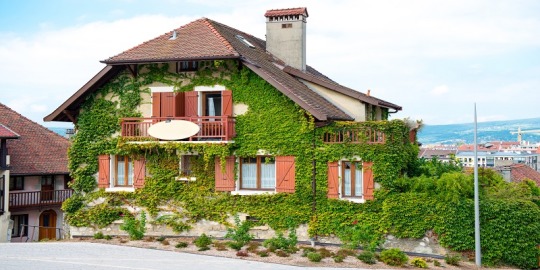
Welcome to Philip Doran Traditional Thatcher, your premier choice for professional thatching services in Ireland.
Thatching is an art passed down through the ages, and we take immense pride in upholding this heritage. Our skilled team, led by Philip Doran, brings a wealth of experience and expertise to every project we undertake. We combine time-honored techniques with the latest industry innovations to create stunning thatched roofs that stand as a testament to Ireland's architectural legacy.
At Philip Doran Traditional Thatcher, we prioritize using the finest natural materials available. Our water reed and straw are carefully sourced for their durability and authenticity, ensuring your thatched roof not only looks exquisite but also withstands the rigors of time and weather.
We understand that each thatching project is unique, and we work closely with our clients to turn their vision into reality. Whether it's a traditional Irish cottage, a historical landmark, or a contemporary property seeking a touch of nostalgia, our team is equipped to deliver exceptional results that blend seamlessly with the surrounding environment.
Our passion for thatching extends beyond just creating new roofs. We also offer restoration, maintenance, and repair services to ensure that Ireland's cherished thatched structures continue to thrive for generations to come. Our team is well-versed in the intricacies of thatch preservation, making us the ideal choice for historical conservation projects.
In addition to the visual charm thatched roofs exude, we offer practical benefits like excellent insulation and natural ventilation. Our team's expertise in thatch construction and maintenance ensures that your roof retains these functional advantages while staying true to its traditional allure.
At Philip Doran Traditional Thatcher, we hold ourselves to the highest standards of professionalism and craftsmanship. From the first consultation to project completion, we communicate clearly with our clients, providing transparent pricing and realistic timelines. Our commitment to delivering exceptional service means you can trust us to bring your thatching project to life efficiently and within budget.
As a company deeply rooted in tradition, we are equally committed to sustainable practices. We take great care to minimize waste and environmental impact in our thatching processes, preserving not only Ireland's architectural heritage but also its natural beauty.
When you choose Philip Doran Traditional Thatcher, you're choosing more than just a thatching service; you're choosing a partner dedicated to excellence and a love for Ireland's cultural heritage. Our reputation for unmatched craftsmanship and dedication to customer satisfaction has earned us the trust of homeowners, historical preservationists, and commercial clients alike.
Whether you're seeking a new thatched roof that exudes timeless elegance or require skilled artisans to restore a cherished thatched cottage, Philip Doran Traditional Thatcher is your go-to choice. Experience the magic of thatched roofs with our team, where tradition meets innovation and craftsmanship stands the test of time. Contact us today to discuss your project, and let's create a breathtaking thatched roof that captures the essence of Ireland's architectural legacy.
#roof thatcher ireland#thatching Ireland#thatched roofer#thatch roof#roof thatching#roof thatch#roof thatcher#thaching ireland#english thatch roof#roof thatchers near me#thatched roofing ireland#thatch roofs ireland#straw roofing in ireland#thatch roofing near me#thatching roofs in Ireland#reed roof
0 notes
Photo
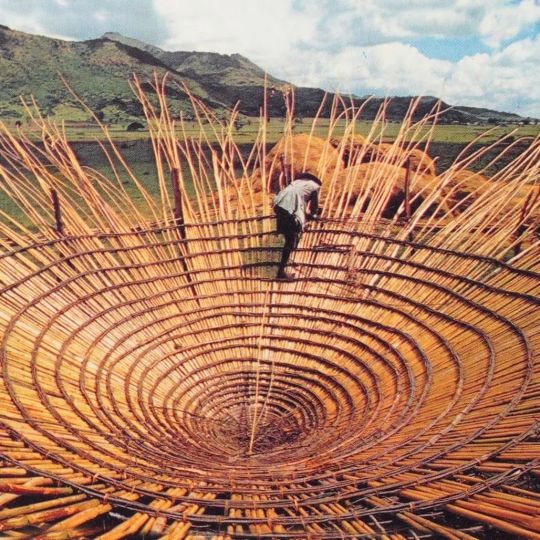
Ethiopia, 1971. Photo by Harald Schultz. "Some peoples use the techniques of basketry to build houses. Poles driven into the ground keep the circular rim firmly stretched while this Ethiopian villager weaves the framework for the roof of his hut from reeds and vines. When the frame is finished, it is inverted, fixed to the walls and thatched for extra protection.: From "The Illustrated encyclopedia of mankind", 1978. https://www.instagram.com/p/Cp0nMDHtlax/?igshid=NGJjMDIxMWI=
2K notes
·
View notes
Text
Highlights of The Teen Wolf DVD Cast Commentary (Ep. 1)
Dylan pretending to be Crystal Reed (who couldn't make it that day).
The cast constantly talking about boobs, balls, butts, and pointing out Dylan's penis outline (which they refer to as his "mammal toe").
Their stunt guy is named Spider.
Dylan talking about how inexperienced, nervous, unattractive (apparently he sometimes breaks out into "mouth herpes" when he's nervous), and awful he is and everyone immediately telling him how amazing he is, Hoechlin even saying he was born an amazing actor and Holland saying she absolutely loves seeing his cheeks all pink and blotchy because it means he's throwing himself 100% into a scene.
Hoechlin was the only one to point out that Posey's pre-transformation looked too premature ejaculatey and recommended they try to shoot the sequence more centered around the head. He didn't say anything until the very last minute, though, because he kept expecting Jeff or any other numerous coordinators or higher ups to notice, before shyly piping up about it.
Sooooooo many jokes flying left and right in complete deadpan, it's sometimes impossible to know what's an actual fact or a joke.
They used KY Jelly as werewolf drool. So Posey's first transformation scene had him with a mouthful of lube.
The teacher-extra couldn't talk and write on the whiteboard at the same time, so they had to CGI him writing the correct word on the board.
Dylan was sooooo excited to film that intro scene of Stiles hanging from the roof because it was technically a stunt and it involved hanging by a crane, but the first time he did it, he blacked out.
Holland originally did the voice of Mrs. Argent on the phone talking to Allison, but it was cut.
Itty-Bitty, first-time-baby-actor-Dylan blatantly looking down at the ground to stand correctly on his mark.
Posey did 17 takes of swiping at a chair to make it land correctly only for them to cut it anyway.
Posey, Hoechlin, Dylan, Holland, and Colton are all cuddled on the same couch in each other's arms as they commentate.
Hoechlin: "Here I'm just standing around." "Oh! Another great shot of me standing around, staring quietly!" "Look, look, look! I'm just standing there, staring!"
#teen wolf#derek hale#tyler hoechlin#stiles stilinski#dylan o'brien#tyler posey#holland roden#colton haynes#dvd commentary
583 notes
·
View notes
Text





Nick vamped out looks on at what just happened. Christina is still in shock. Nick goes to Christina and asks, Are you alright? Both Christina and Nick look back at a dead Matthew.
#Forever Knight#110 Dead Air#Matthew's apartment#Roof#flying#Nick Knight#Geraint Wyn Davies#Vamped out#Dr. Christina Noble#Diane Cary#Matthew Reed#Electrocuted#Dead#David Hewlett#Former Patient#Vampires#blood#Toronto#Canada#Police#Nicholas Knight#Nicholas De Brabant#Homicide#Murder#Call in Radio Show#Death
4 notes
·
View notes
Text



That famous California roofing.
Red tile roofs became a universal design after the Indigenous population rebelled against colonization, and its racist missionary representatives, by lighting fire to missions that had reed roofing.
220 notes
·
View notes
Text

Young men under a reed roof, Torremolinos, Spain, Herbert List, 1951
#photography#vintage photography#vintage#black and white photography#herbert list#spain#torremolinos#1950s#1951#german#jewish#lgbtqia artists#queer artists
132 notes
·
View notes
Text

Spain, Andalucia, Torremolinos, young men under reed roof
Herbert List, 1951
359 notes
·
View notes